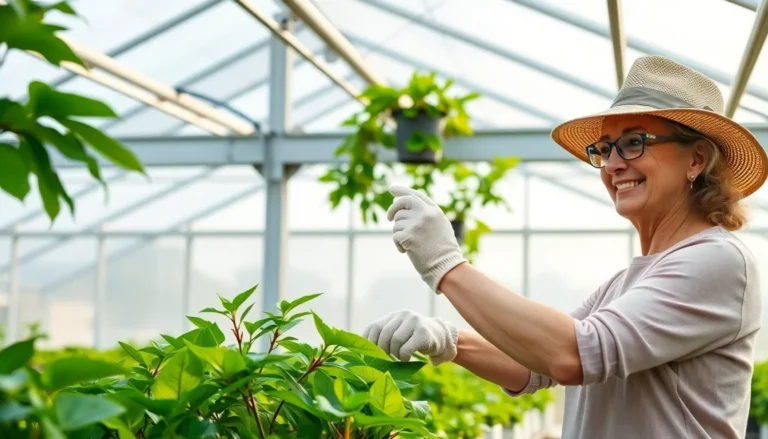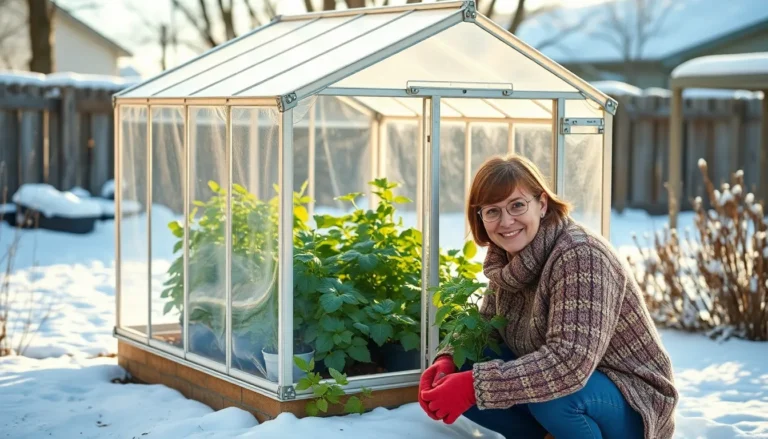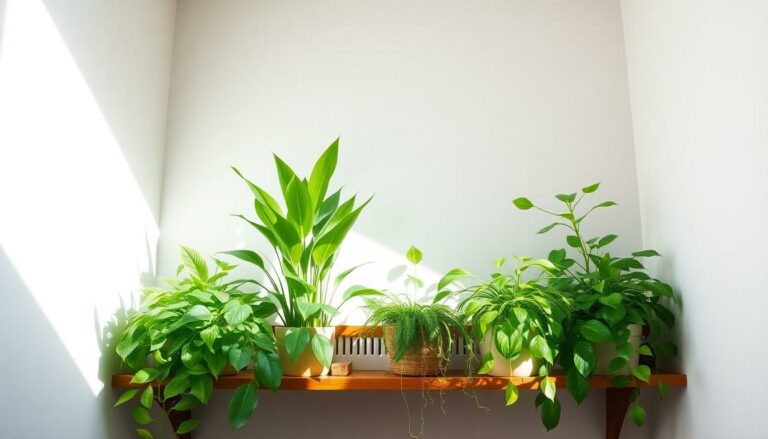The Best Fluffy Pancakes recipe you will fall in love with. Full of tips and tricks to help you make the best pancakes.
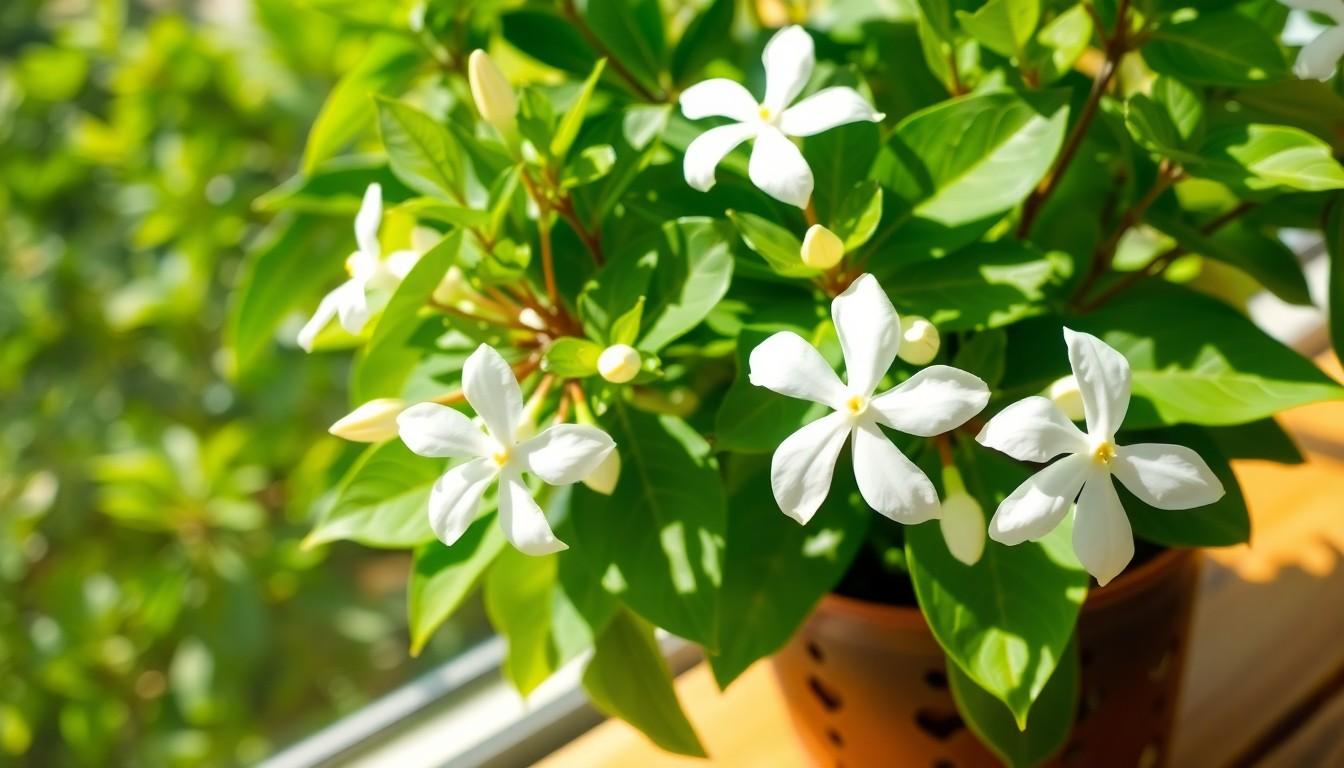
Arabian Jasmine Plant Care: Essential Tips for Lush, Fragrant Growth
If you’re looking to add a touch of elegance and fragrance to your home, the Arabian jasmine plant is your go-to green companion. With its stunning white blooms and intoxicating scent, this plant doesn’t just sit pretty; it’s a showstopper that’ll have your guests asking, “What’s that heavenly aroma?” Caring for it might seem daunting, but fear not! With the right tips, even a plant parent with two left thumbs can keep this beauty thriving.
Overview of Arabian Jasmine Plant
Arabian jasmine, known scientifically as Jasminum sambac, is a popular choice among plant enthusiasts. This species thrives in warm climates and requires specific care for optimal growth. Characterized by its white, star-shaped flowers, Arabian jasmine emits a sweet fragrance that attracts pollinators and delights the senses.
Growth habits vary, with plants reaching heights of 3 to 6 feet. Flowers appear year-round in suitable conditions, providing continuous fragrance. The leaves, glossy and dark green, offer an appealing backdrop for the delicate blooms. This plant can be grown in containers or directly in the ground, allowing flexibility in placement.
Light conditions play a crucial role in its care. Arabian jasmine flourishes when given full sun exposure, meaning at least six hours of direct sunlight each day. Insufficient light may lead to leggy growth and fewer blooms. Adequate water also contributes to its health. Soil should remain consistently moist, but not soggy; a balance ensures the roots remain healthy.
Fertilization supports robust growth. Applying a balanced fertilizer every four to six weeks during the growing season encourages blooming. Pruning becomes necessary to maintain shape and promote airflow. Regularly removing dead or yellowing foliage enhances overall plant vigor.
Pest management includes being vigilant for common pests like aphids or spider mites. Addressing infestations promptly prevents significant damage. When planted in optimal conditions, Arabian jasmine becomes a fragrant addition to any garden or indoor space.
Ideal Growing Conditions
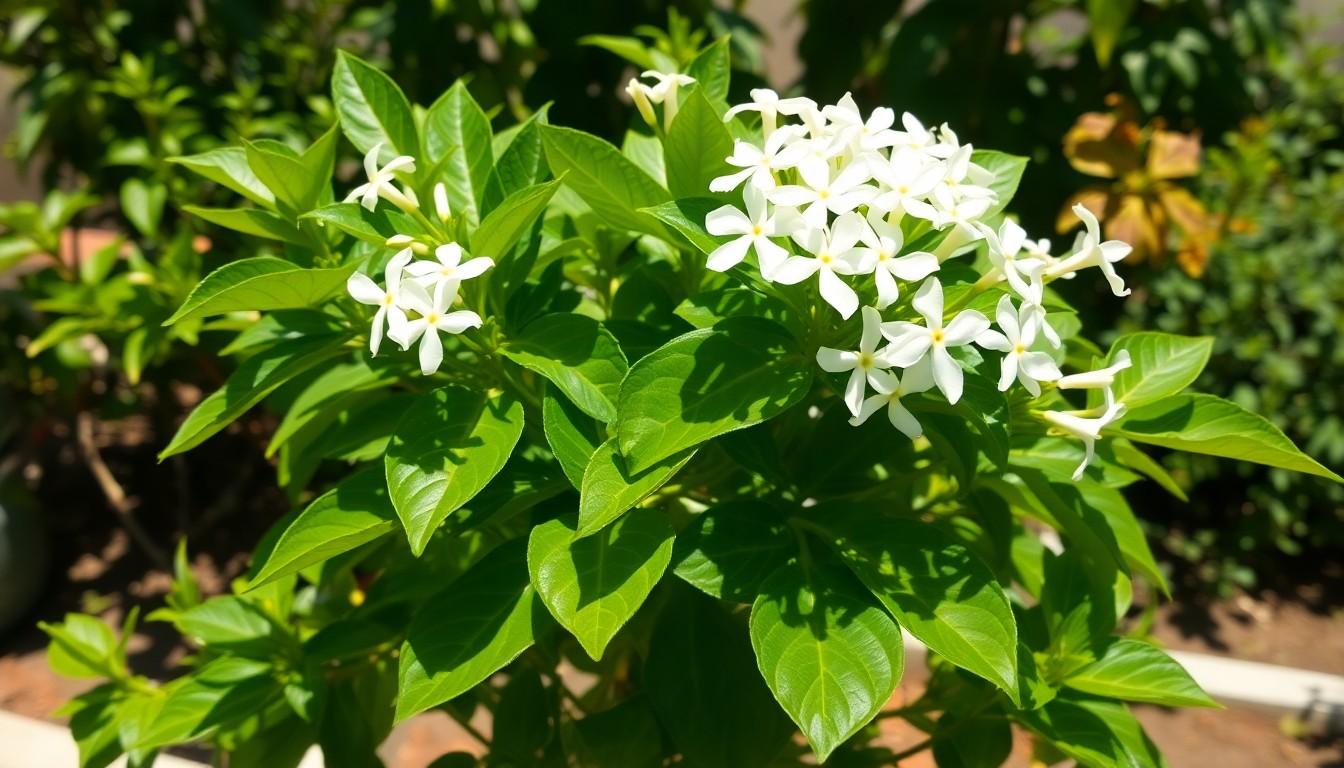
Arabian jasmine thrives under specific conditions that enhance its growth and fragrance. Understanding these conditions ensures successful care for the plant.
Light Requirements
Bright, direct sunlight encourages abundant blooms. Placing the plant in a location that receives at least 6 hours of sunlight each day supports healthy growth. Indirect light, while tolerable, may result in fewer flowers. Adjusting exposure during different seasons can benefit the plant, as longer daylight hours stimulate growth. In low-light settings, consider supplementing with grow lights to maintain vibrancy.
Temperature and Humidity
Optimal temperatures range from 65°F to 75°F, ensuring the plant remains healthy. It can withstand higher temperatures, but consistent heat above 85°F may stress it. Night temperatures should ideally drop slightly to enhance flower production. Furthermore, humidity plays a crucial role; maintaining levels between 40% and 60% benefits overall health. In drier environments, misting the leaves occasionally or placing a humidifier nearby can help recreate ideal conditions.
Soil and Fertilization
Proper soil and fertilization play crucial roles in Arabian jasmine’s growth and health. Selecting the right soil ensures optimal drainage and nutrient retention.
Best Soil Types
Well-draining potting soil proves ideal for Arabian jasmine. A mix of peat moss and perlite or sand fosters aeration and moisture retention. Gardeners recommend a pH range of 6.0 to 7.0 for best results. This level encourages nutrient availability. A planting medium with organic matter like compost enhances soil fertility and enriches growth. Choose a container with drainage holes to prevent root rot, ensuring healthy plants.
Fertilization Schedule
Regular fertilization supports vibrant growth in Arabian jasmine. Apply a balanced, water-soluble fertilizer every 4 to 6 weeks during the growing season from spring to fall. Dilute the fertilizer to half strength to prevent nutrient burn. Consider applying a slow-release fertilizer at the beginning of the growing season for sustained nourishment. During winter months, reduce fertilization frequency, allowing the plant to rest. Monitoring the plant’s growth and adjusting the fertilization schedule can yield lush, abundant blooms.
Watering Practices
Watering plays a vital role in the health of the Arabian jasmine plant. Maintaining the right moisture level ensures lush growth and abundant flowers.
Frequency of Watering
Watering frequency varies based on factors such as climate and season. Generally, Arabian jasmine prefers consistently moist soil but not soggy conditions. During the growing season, water the plant once a week or when the top inch of soil dries out. In winter, the watering schedule can shift to every two weeks to accommodate the plant’s dormancy. Checking soil moisture with a finger can provide reassurance about when to water.
Signs of Overwatering or Underwatering
Indicators of watering issues are often noticeable. Yellowing leaves commonly signify overwatering, as excess moisture can lead to root rot. Conversely, wilting or crispy leaf edges point to underwatering, reflecting insufficient moisture. Uneven flowering can also suggest improper watering practices. Observing these signs promptly allows for timely adjustments, ensuring the Arabian jasmine remains healthy and vibrant.
Pruning and Maintenance
Pruning Arabian jasmine promotes healthy growth and enhances its overall appearance. Regular maintenance focuses on promoting good airflow and shape.
Pruning Techniques
Proper pruning techniques significantly benefit the Arabian jasmine plant. Start by removing dead or yellowing leaves to encourage new growth. Thin out crowded branches to facilitate air circulation and sunlight exposure. Timing matters; aim to prune in early spring before the new growth begins. Cut back to just above a leaf node to stimulate branching. Always use clean, sharp tools to minimize damage and reduce the risk of infections. Regularly checking the plant helps maintain its desired shape and encourages abundant blooms.
Pests and Diseases Management
Managing pests and diseases ensures vibrant health for the Arabian jasmine. Common pests include aphids and spider mites, which can quickly infest the plant. Inspect leaves and stems regularly for signs of trouble; sticky residue or webbing often indicates these pests. Neem oil or insecticidal soap can effectively combat such infestations. Fungal issues may arise in overly humid conditions, so ensuring proper airflow prevents these problems. Always maintain a close watch for early symptoms, allowing for swift action and protection against severe damage.
Conclusion
Caring for the Arabian jasmine plant can be a rewarding experience. With its stunning blooms and intoxicating fragrance it’s no wonder this plant is a favorite among gardeners. By providing the right amount of sunlight moisture and nutrients anyone can cultivate a thriving Arabian jasmine.
Regular maintenance such as pruning and vigilant pest management ensures the plant remains healthy and vibrant. Whether grown indoors or in a garden this adaptable plant brings beauty and elegance to any space. Following the care tips outlined will help nurture this delightful addition to any home or garden.

